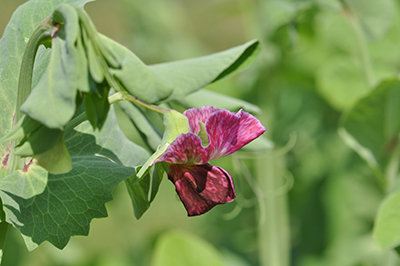Pisum sativum L. (Fabaceae) cv. Blauwschokker





| ENG | Garden pea |
| SK | Hrach záhradný |
| CZ | hrách zahradní |
| PL | Groch siewny |
| HU |
Using
The consumption of peas brings health benefits derived mainly from the concentration of starch, protein, fibre, vitamins, minerals and phytochemicals: i.e. polyphenolics having antioxidant and anticarcinogenic activity, saponins with hypocholesterolaemic and anticarcinogenic activity, and galactose oligosaccharides exerting beneficial prebiotic effects in the large intestine.
| I. | II. | III. | IV. | V. | VI. | VII. | VIII. | IX. | X. | XI. | XII. | |||||||||||||
| Sowing (field) | ||||||||||||||||||||||||
| Harvest / Herba | ||||||||||||||||||||||||
Botanical description and occurrence:
Peas are annual, cool-season crops of Mediterranean origin. Plants are dwarf or vining habits. The vining cultivars coil around any support with thin tendrils which are modified leaves. Inflorescences are borne on the end of axillary peduncles and comprising one or two self-fertile flowers white, pink, lavender, blue or purple. Pods contain several seeds, range in colour, from yellow to browny when mature. Peas are self-pollinate. The immature garden peas are used as fresh, frozen or canned; field peas are grown to produce dry seeds which are the basis of pea soup, staples of medieval cuisine. ‘Blauwschokker‘ garden pea is grown from hundreds of years in Europe, and is still popular among amateur gardeners. It distinguishes purple pods with green seeds.
Why to have the plant in your garden:
‘Blauwschokker‘ is a beautiful and ornamental pea that brings unusual purple-blue pods that can be harvested young and used as a snow-pea, or let mature and shell for fine soup peas. It also produces ornamental purple flowers. The perfect vegetable for kids :).
Text:
Dr. Agnieszka Sekara, University of Agriculture in Krakow, Poland
Photo:
Dr. Jan Mezey, Dr. Ivana Mezeyova, SUA, Nitra, Slovak Republic

